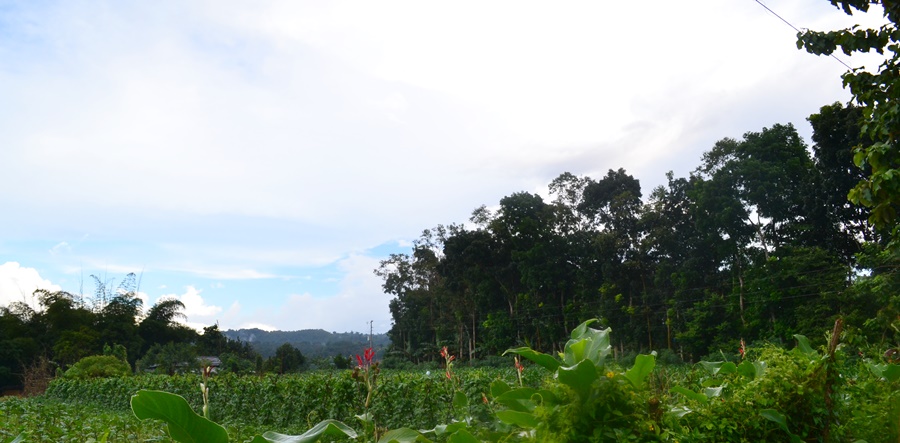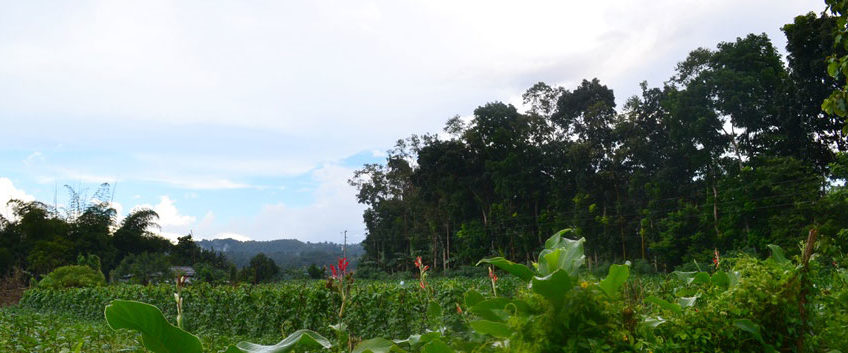
Government agencies, the private sector, NGOs and universities want a new direction for increasing trees on farms to grow a green economy and strengthen the vulnerable archipelago
It will take 206 years to restore to productivity of the 8 million hectares of open, unproductive, denuded or degraded state forest land in the Philippines at the average rate of reforestation from 1960 to 2010.
To speed things up, the National Greening Program was established in 2011 to reforest all such areas by 2028, a mere ten years from now, which is an ambitious goal. A 30% funding shortfall on the associated Forest Management Plan makes this goal even more ambitious. Together, these represent a looming challenge to not only meet national targets on the environment and reduction of poverty but also commitments to the Paris Agreement on climate change, and the United Nations conventions on Biodiversity and to Combat Desertification.
But help to plant and manage millions of trees could be right next door. Adjacent to the gazetted ‘forest’ land (whether it has trees on it or not does not alter the classification), there are a further 14.2 million hectares of ‘alienable and disposable’ land in the public domain, much of which are used for agriculture. There are two ways of quickly and effectively mobilizing this land. First, allow agroforestry concessions within the gazetted forest land. Second, integrate trees on private farms outside of forest land.
At present, this farm land is mired in a web of regulations that, perhaps unintentionally, restrict the private sector — both small- and large-scale — from growing and harvesting trees that could contribute to reducing timber imports, improving yields and incomes, diversifying farm livelihoods and diets, increasing resilience to climate change, storing carbon and restoring degraded land. In short, meeting many national and international goals.
While trees on farms, also known as agroforestry, have been mentioned in some government policies and plans for agriculture and forestry, they have mainly been promoted for upland areas. But even so, farmers in the uplands and elsewhere throughout the nation are challenged to sell trees they grow on their land. In the cases where growing trees is theoretically encouraged, a maze of regulations and permits must be navigated that make it almost impossible for farmers at any scale to sell their trees and operate as environmentally sustainable timber, fuel, food and biodiversity businesses. Weak support, confused roles and rotating government staff further exacerbate the situation.
To help the Government meet its targets, the World Agroforestry Centre and the Forestry Development Centre of the College of Forestry and Natural Resources at the University of the Philippines Los Baños convened a forum of people from Government agricultural, forestry and energy agencies, non-governmental organizations, researchers and farmers’ organizations. Held 20 March 2018 in Quezon City, the forum issued a resolution, reproduced below.
Resolution on Harnessing the Potential of Trees on Farms to Contribute to a Green Economy in the Philippines
- Recognizing the significance of agriculture and forestry sectors in the Philippine economy
- Recognizing the government’s ambitions for a greener economy, which are manifested in several of its current laws and programs, namely:
- the Philippine Green Jobs Act of 2016, the “carbon-neutral” initiative that certifies public and private sector organizations
- the National Greening Program that sees planting of trees on degraded land as a catalyst to poverty reduction, food security, biodiversity conservation, climate change mitigation and adaptation
- the Department of Agriculture’s strategy for crop diversification; and
- the Government’s commitment to the 21st Conference of Parties to the United Nations Framework Convention on Climate Change, Convention on Biological Diversity, and Convention to Combat Desertification, with ambitious targets for climate-change adaptation and mitigation, Aichi, and reducing land degradation.
- Acknowledging the critical role trees on farms play in maintaining high levels of landscape biodiversity through in-situ conservation, connecting fragmented wild habitat, and conserving soil biodiversity and agrobiodiversity
- Acknowledging the critical role trees on farms can play for carbon sequestration and for offsetting of greenhouse gas emissions from agriculture and other sectors
- Acknowledging the critical role tree products play as safety nets and part of income diversification and adaptive strategies in communities facing increased climate variability and climate-related crop failures
- Realizing the need to integrate trees-on-farms targets into sub-national or local plans, supporting the various national greening policies
Therefore, we, the participants of the forum on Harnessing the Potential of Trees on Farms to Contribute to a Green Economy in the Philippines, being advocates of climate-smart, sustainable agriculture and forestry practices, hereby support the following key points of action:
- Participate in the development of a road map for integrating trees-on-farms’ targets into sub-national or local plans to support various national greening policies.
- Promote intersectoral collaboration to mainstream widespread practice of agroforestry as one of the strategies to achieve green growth.
- Encourage the formulation of a national agroforestry policy to support agroforestry as means to bridge forestry, agriculture and conservation policies and guidelines to achieve the Sustainable Development Goals
- Encourage the development of policy instruments to provide financial incentives to stimulate smallholders’ investments in mixed systems (for example, lower insurance premiums, micro-credit, tax breaks, performance-based payments through rewards for environmental services’ schemes).
- Encourage the development of enterprises or business models that can contribute to poverty alleviation of agroforestry farmers and forest communities.
- Promote climate-smart agriculture, agroforestry and smallholder timber production.
- Encourage more participation in related initiatives and foster greater appreciation from the general public.
- Advance agroforestry research in the Philippines to guide policy-makers in crafting evidence-based policies and to enable farmers in designing attractive and effective agroforestry farming systems.
The Forum participants were representatives or associates from the House of Representatives Committee on Natural Resources, Climate Change Commission, Forest Management Bureau and Ecosystems Research and Development Bureau of the Department of Environment and Natural Resources, Bureau of Soils and Water Management of the Department of Agriculture, National Power Corporation, Development Bank of the Philippines, National Greening Program, Foundation for the Philippine Environment, Energy Development Corporation, Industrial Development Corporation, Philippine Center for Environmental Protection and Sustainable Development Inc, Society of Filipino Foresters, Surigao Development Corporation, Laguna Creamery, Southeast Asian Regional Center for Graduate Study and Research in Agriculture, Philippines Biodiversity and Watersheds Improved for Stronger Economy and Ecosystem Resilience program of the United States Agency for International Development, World Agroforestry Centre (ICRAF) offices of the Philippines, Southeast Asia and Headquarters, and the University of the Philippines Los Baños’ School of Environmental Science and Management, College of Forestry and Natural Resources, and Agricultural Systems Institute of the College of Agriculture and Food Science.


